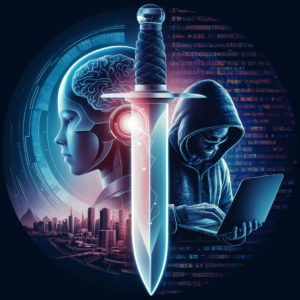Artificial Intelligence (AI) is revolutionizing various fields, with robotics being one of the most significant beneficiaries. AI enables robots to perform complex tasks autonomously, making them smarter, more efficient, and capable of operating in dynamic environments. In this article, we’ll explore how AI is transforming robotics, highlighting key advancements and providing examples of autonomous machines in action.
The Role of AI in Robotics
AI enhances the capabilities of robots by providing them with the ability to learn from data, make decisions, and adapt to new situations. The integration of AI in robotics encompasses several key areas:
- Perception: AI enables robots to perceive their surroundings through sensors, cameras, and other input devices. This allows robots to recognize objects, understand spatial relationships, and navigate environments.
- Decision-Making: AI algorithms help robots make informed decisions based on their perception of the environment and predefined goals. This involves planning, reasoning, and problem-solving.
- Learning: Machine learning (ML) techniques enable robots to learn from experience, improving their performance over time without explicit programming.
- Adaptability: AI allows robots to adapt to changes in their environment and tasks, making them more versatile and capable of handling unforeseen situations.
Examples of AI in Robotics
1. Autonomous Vehicles
Autonomous vehicles, such as self-driving cars, are one of the most well-known applications of AI in robotics. These vehicles use AI to perceive their surroundings, make driving decisions, and navigate complex traffic scenarios.
Example: Waymo
Waymo, a subsidiary of Alphabet Inc., is at the forefront of developing self-driving technology. Their autonomous vehicles use a combination of sensors, including LiDAR, cameras, and radar, along with AI algorithms to interpret data, recognize objects (e.g., pedestrians, other vehicles), and make real-time driving decisions.
2. Industrial Automation
AI-powered robots are transforming manufacturing and industrial processes by enhancing precision, efficiency, and safety.
Example: Fanuc Robots
Fanuc, a leading robotics company, uses AI to improve the performance of their industrial robots. These robots are capable of performing tasks such as assembly, welding, and painting with high precision. AI enables them to optimize their movements, detect defects, and adapt to variations in the production line.
3. Healthcare Robotics
In healthcare, AI is enabling robots to assist with surgeries, patient care, and rehabilitation.
Example: Da Vinci Surgical System
The Da Vinci Surgical System is an AI-assisted robotic platform used for minimally invasive surgeries. Surgeons control the robot’s precise movements, and AI provides real-time feedback and image recognition to enhance accuracy and reduce the risk of complications.
4. Service Robots
Service robots equipped with AI are being deployed in various sectors, including hospitality, retail, and logistics, to perform tasks such as customer service, inventory management, and delivery.
Example: SoftBank’s Pepper Robot
Pepper, developed by SoftBank Robotics, is an AI-powered humanoid robot designed for customer interaction. Pepper can recognize faces, understand emotions, and engage in natural language conversations, making it ideal for roles in retail stores, hotels, and airports.
Key Technologies Driving AI in Robotics
1. Machine Learning and Deep Learning
Machine learning and deep learning algorithms are fundamental to the development of intelligent robots. These algorithms enable robots to learn from vast amounts of data, recognize patterns, and make decisions.
Example: Reinforcement Learning in Robotics
Reinforcement learning is a type of machine learning where robots learn through trial and error. For instance, a robot arm can learn to grasp objects by continuously trying different approaches and receiving feedback on its performance. Over time, it improves its grasping technique to achieve better results.
2. Computer Vision
Computer vision enables robots to interpret and understand visual information from the environment. This technology is crucial for tasks such as object recognition, navigation, and inspection.
Example: Object Detection with Convolutional Neural Networks (CNNs)
CNNs are a type of deep learning model used for image recognition and object detection. Robots equipped with CNNs can identify and locate objects within their surroundings, enabling them to interact with the environment more effectively.
3. Natural Language Processing (NLP)
NLP allows robots to understand and respond to human language, facilitating communication and collaboration between humans and robots.
Example: Voice-Activated Assistants
Voice-activated robots, such as Amazon’s Alexa or Google’s Assistant, use NLP to understand spoken commands and provide relevant responses. These assistants can control smart home devices, answer questions, and perform various tasks based on voice input.
Challenges and Future Directions
While AI has made significant strides in robotics, several challenges remain:
- Ethical and Safety Concerns: Ensuring the safe and ethical use of AI in robotics is crucial, particularly in sensitive applications such as healthcare and autonomous vehicles.
- Data Privacy: The collection and use of data by AI-powered robots raise concerns about privacy and security.
- Technical Limitations: AI algorithms require large amounts of data and computational power, which can be challenging to provide in certain environments.
Despite these challenges, the future of AI in robotics looks promising. Advances in AI technologies, such as improved learning algorithms, better sensor integration, and enhanced computational capabilities, will continue to drive the development of more autonomous, intelligent, and versatile robots.
Conclusion
AI is playing a pivotal role in the evolution of robotics, enabling machines to perform complex tasks autonomously and efficiently. From autonomous vehicles to industrial automation and healthcare, AI-powered robots are transforming various sectors, enhancing productivity, precision, and safety. As AI technology continues to advance, we can expect even more innovative and capable robotic systems, paving the way for a future where intelligent machines seamlessly integrate into our daily lives.
Hashtags
#AI #Robotics #AutonomousMachines #MachineLearning #DeepLearning #ComputerVision #NaturalLanguageProcessing #HealthcareRobots #ServiceRobots #IndustrialAutomation #Technology #Innovation #FutureOfAI #TechBlog #AIInRobotics #SmartMachines #IntelligentRobots





